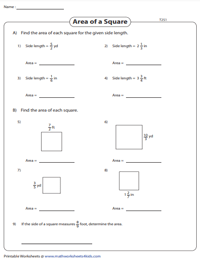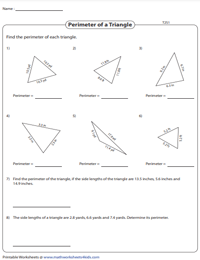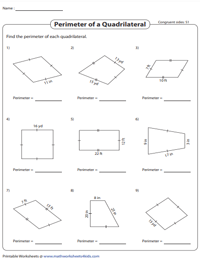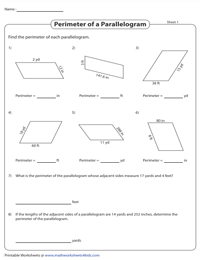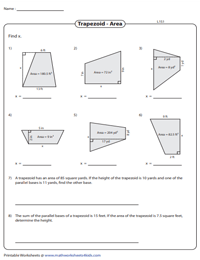6th Grade Math Worksheets
Count on our printable 6th grade math worksheets with answer keys for a thorough practice. With strands drawn from vital math topics like ratio, multiplication, division, fractions, common factors and multiples, rational numbers, algebraic expressions, integers, one-step equations, ordered pairs in the four quadrants, and geometry skills like determining area, surface area, and volume, organizing numerical data as dot plots, histograms and box plots, finding mean, median, and quartiles of datasets, these pdfs become your often go-to place. Grab your ticket to a great start with our free math worksheets for grade 6 students!
Select Grade 6 Math Worksheets by Topic
Explore 1,020+ Sixth Grade Area and Perimeter Worksheets
Square the side lengths offered as fractions and mixed numbers to determine the area of the squares.
Perimeter of a Rectangle | Decimals
Add up the decimal dimensions and multiply it by 2 to figure out the area of the rectangles.
Area of Rectangular Paths | Word Problems
Subtract the area of the inner rectangle from that of the outer one to obtain the area of the rectangular paths in these word problems.
Perimeter of a Triangle | Decimals
Sum up the decimal lengths of the three sides to calculate the perimeter of the triangles.
The base lengths and heights of the triangles are rendered in integers ≥ 10. Multiply both and divide by 2 to find their perimeter.
Perimeter of a Quadrilateral using the Congruent Property
Observe the hatch marks, identify the congruent sides, copy the indicated lengths, and add the lengths of all four sides.
Area of a Quadrilateral | Whole Numbers
Use the formulas A = a2 to obtain the area of a square, A = lw for that of a rectangle, and A = bh for the area of a parallelogram.
Find the Area of Mixed Shapes | Whole Numbers
Plug the lengths in the apt formulas and deduce the areas of circles, triangles, squares, rectangles, parallelograms, and trapezoids.
Perimeter of Parallelograms | Unit Conversion
Recall that a parallelogram has congruent opposite sides, and add twice the given lengths upon converting them to the specified unit.
Area of a Parallelogram | Integers - Type 1
Obtain the area of parallelograms whose dimensions are presented as integers ≤ 20 by multiplying its base length by height.
Finding the Base Length or Height of Trapezoids
Assign the area and measures in the formula A = (a + b). h / 2, and solve for the unknown base(a or b) or height(h) of the trapezoids.
Area of a Rhombus | Integers - Type 1
The lengths of the diagonals are depicted as integers ≤ 20. Half the product of the diagonals will give you the area of the rhombus.
Finding the Diagonal of a Kite
The area and length of one of the diagonals are provided. Substitute the known values in A = (d1 x d2)/2 and solve for the unknown.
Decompose each irregular polygon into many basic plane figures, find their areas using the relevant formulas, and add them up.
Area of Compound Shapes | Adding regions
Compute the area of the compound figures composed of two smaller plane figures by finding the individual areas and adding them.

